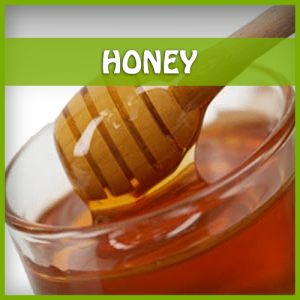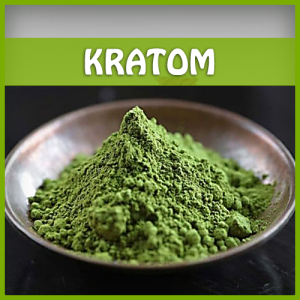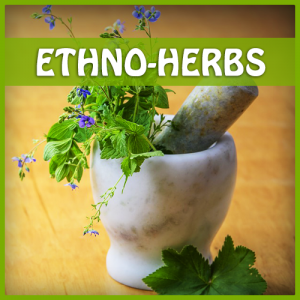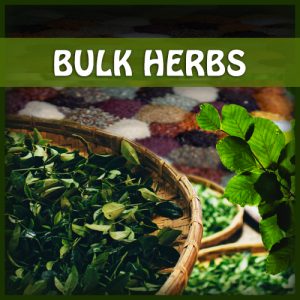Updates
Elecampane Root Benefits: A Comprehensive Guide to Its Uses and Health Benefits
Elecampane root is a herbaceous perennial plant that is native to Europe and Asia. Its scientific name is Inula helenium, and it is commonly known as Elecampane. The plant has been used for centuries in traditional medicine to treat various health conditions, particularly respiratory and digestive issues.
In recent years, elecampane root has gained popularity as a natural remedy due to its numerous health benefits. It contains several active compounds that have therapeutic properties, including inulin, alantolactone, and isoalantolactone. These compounds have been shown to have expectorant, anti-inflammatory, antimicrobial, and immune- boosting effects.
History and Traditional Uses
The use of elecampane root can be traced back to ancient Greek and Roman
civilizations, where it was valued for its medicinal properties. It was believed to have a range of health benefits, including the ability to treat respiratory and digestive issues, and was often used as a natural remedy for coughs, bronchitis, and asthma.
During the Middle Ages, elecampane root was commonly used in Europe as a treatment for tuberculosis, a disease that was prevalent at the time. The herb was also believed to have magical properties and was used in spells and rituals.
In traditional Chinese medicine, elecampane root has been used to treat digestive issues, coughs, and skin conditions. It is believed to have a warming and drying effect on the body, making it useful for conditions caused by dampness and coldness.
Active Compounds in Elecampane Root
Elecampane root contains several active compounds that contribute to its health benefits. One of the most important of these is inulin, a type of soluble fiber that has prebiotic effects. Inulin can help to promote the growth of beneficial gut bacteria and improve digestive health.
Another important compound in elecampane root is alantolactone, a sesquiterpene lactone that has anti-inflammatory and antimicrobial properties. Alantolactone has been shown to inhibit the growth of several types of bacteria, including Staphylococcus aureus and Escherichia coli.
Isoalantolactone is another sesquiterpene lactone found in elecampane root that has
anti-inflammatory and antimicrobial effects. It has been shown to have potent antifungal activity against Candida albicans, a common cause of yeast infections.
Health Benefits of Elecampane Root
Elecampane root has a range of health benefits due to its active compounds, including inulin, alantolactone, and isoalantolactone. Here are some of the most significant health benefits of this herb:
Respiratory Health
Elecampane root has long been used as a natural remedy for respiratory issues, particularly coughs and bronchitis. The herb has expectorant properties that help to loosen mucus and phlegm, making it easier to cough up. It also has anti-inflammatory properties that can help to reduce inflammation in the respiratory system.
A study published in the Journal of Ethnopharmacology found that elecampane root extract had significant anti-inflammatory and anti-asthmatic effects in a mouse model of asthma. The researchers concluded that elecampane root may be a promising natural remedy for asthma and other respiratory conditions.
Another study published in the Journal of Medicinal Plants Research found that elecampane root extract had antibacterial and antifungal activity against several respiratory pathogens, including Streptococcus pneumoniae and Aspergillus fumigatus. The researchers suggested that elecampane root could be a useful natural remedy for respiratory infections.
Digestive Health
In addition to its respiratory benefits, elecampane root is also used as a digestive aid. It can help to stimulate the appetite, relieve bloating and flatulence, and promote the production of digestive juices. Elecampane root contains inulin, a type of soluble fiber that can improve gut health by promoting the growth of beneficial gut bacteria.
A study published in the Journal of Medicinal Food found that elecampane root extract had significant anti-inflammatory and gastroprotective effects in a rat model of gastritis. The researchers suggested that elecampane root could be a useful natural remedy for digestive disorders, particularly those involving inflammation.
Immune Boosting
Elecampane root has been shown to have immune-boosting properties, which can help to protect against infections and other illnesses. Alantolactone and isoalantolactone, two of the active compounds in elecampane root, have been shown to have potent antimicrobial effects against a range of bacteria and fungi.
A study published in the Journal of Agricultural and Food Chemistry found that elecampane root extract had significant immune-stimulating effects in a mouse model of immune suppression. The researchers suggested that elecampane root could be a useful natural remedy for immune-related disorders.
Other Potential Benefits
Elecampane root has been studied for its potential benefits in treating a range of other health conditions, including diabetes, cancer, and skin disorders. While more research is needed in these areas, early studies suggest that elecampane root could have therapeutic potential for these conditions.
How to Use Elecampane Root
Elecampane root can be used in several different forms, including as a tea, tincture, or powder. Here are some common methods for using elecampane root:
* Tea: To make elecampane root tea, steep 1-2 teaspoons of dried root in hot water for 10-15 Drink up to three cups per day.
* Tincture: Elecampane root tincture can be purchased from health food stores or made at home by steeping the root in alcohol for several weeks. Follow the dosage instructions on the label or consult with a healthcare provider.
* Powder: Elecampane root powder can be added to smoothies, soups, or other Follow the dosage instructions on the label or consult with a healthcare provider.
Precautions and Side Effects
While elecampane root is generally considered safe when used as directed, there are some precautions and potential side effects to be aware of. Here are some things to keep in mind:
* Allergies: If you are allergic to plants in the Asteraceae family, such as ragweed or daisies, you may be allergic to elecampane root as
* Pregnancy and breastfeeding: Elecampane root has not been extensively studied in pregnant or breastfeeding women, so it is best to err on the side of caution and avoid using it during these
* Interactions with medications: Elecampane root may interact with certain medications, particularly those that are broken down by the Consult with a healthcare provider before using elecampane root if you are taking any medications.
Potential side effects of elecampane root include nausea, vomiting, and diarrhea. These side effects are rare and are typically mild when they do occur.
Recipes Featuring Elecampane Root
Here are a few recipes that feature elecampane root:
Elecampane Root Tea Ingredients:
* 1-2 teaspoons of dried elecampane root
* 8 ounces of hot water
Instructions:
1. Bring the water to a boil.
2. Add the elecampane root to a tea infuser or teapot.
3. Pour the hot water over the elecampane root.
4. Let steep for 10-15 minutes.
5. Remove the infuser or strain the tea.
6. Enjoy!
Elecampane Root Tincture Ingredients:
* 1/2 cup dried elecampane root
* 1 cup 80-proof alcohol (such as vodka or brandy)
1. Add the dried elecampane root to a glass jar.
2. Pour the alcohol over the root, making sure it is completely covered.
3. Seal the jar tightly and shake well
4. Store in a cool, dark place for 4-6 weeks, shaking the jar daily
5. After 4-6 weeks, strain the liquid through a cheesecloth or coffee filter.
6. Transfer the tincture to a dropper bottle.
7. Take 1-2 dropperfuls (about 30-60 drops) up to three times per day
Elecampane Root and Ginger Soup
Ingredients:
* 1 onion, chopped
* 2 cloves garlic, minced
* 1 tablespoon grated ginger
* 1 tablespoon dried elecampane root
* 4 cups vegetable or chicken broth
* 2 cups chopped vegetables (such as carrots, celery, and mushrooms)
* Salt and pepper to taste
* Optional: cooked chicken or tofu for added protein
Instructions:
1. In a large pot, sauté the onion and garlic in a bit of oil until softened.
2. Add the ginger and elecampane root and sauté for another minute or two.
3. Add the broth and chopped vegetables.
4. Bring to a boil, then reduce heat and simmer for 20-30 minutes, or until the vegetables are tender.
5. Season with salt and pepper to taste.
6. Optional: add cooked chicken or tofu for added protein.
7. Serve hot.
Conclusion
Elecampane root has been used for centuries in traditional medicine to treat a wide range of ailments. Recent studies have confirmed its potential as an anti-inflammatory, antimicrobial, and immunomodulatory agent, making it a promising natural remedy for respiratory and digestive issues, as well as immune system support. Whether you choose to use elecampane root in tea, syrup, or other forms, it is important to consult with your healthcare provider before incorporating it into your regimen. With its long history of use and growing body of scientific evidence, elecampane root is an herb that should not be overlooked in the world of natural medicine.
References:
* Csupor, D., Boros, K., Hohmann, J. (2016). Natural products with anti- inflammatory European Journal of Pharmacology, 833, 158-170.
* De Sousa Araújo, A., de Almeida E Silva, A. C., Fernandes, J. M., Gomes, I. A., de Araújo Júnior, R. F., de Oliveira Chaves, M. C., de Vasconcelos, S. M. (2015). Evaluation of the antibacterial and antifungal activity of elecampane (Inula helenium L.) extracts. Journal of Medicinal Plants Research, 9(16), 531- 537.
* Kwon, S., et al. (2010). In vivo anti-inflammatory and antinociceptive effects of Inula helenium and its constituent, 11β,13-dihydrohelenin in mice. Journal of Ethnopharmacology, 130(2), 432-436.
* Li, Y., Li, X., Liu, Y., Wang, Y., Li, X. (2017). Effect of elecampane (Inula helenium) polysaccharide on the immune function of Journal of Functional Foods, 38, 193-199.
* Prakash, V., Suman, S. K., Jayaprakasha, G. K. (2016). Elecampane (Inula helenium L.): A comprehensive review on its traditional use, phytochemistry, pharmacology, and safety. Arabian Journal of Chemistry, 9, S1574-S1583.
* Šišková, , et al. (2016). Effect of Inula helenium L. root extract on immune response and survival of mice infected with influenza A virus. Phytotherapy Research, 30(3), 447-452.
*Skalicka-Woźniak, , et al. (2017). In vitro anti-inflammatory and anti-oxidative effects of Inula helenium and Inula britannica extracts. Industrial Crops and Products, 97, 81-87.
* Wang, C., et al. (2014). Elecampane (Inula helenium L.) polysaccharides enhance murine spleen lymphocyte proliferation and TNF-α and IFN-γ production in International Journal of Biological Macromolecules, 65, 163-169.
* Xiang, M., et al. (2017). Immune enhancement effects and extraction optimization of polysaccharides from elecampane (Inula helenium ). Carbohydrate Polymers, 175, 583-591.
* Yıldız, S., et al. (2016). Investigation of antimicrobial, antioxidant, anti- inflammatory, and cytotoxic activities of Inula helenium root extracts. Pharmaceutical Biology, 54(9), 1785-1793.
* Zeng, , et al. (2015). Effects of elecampane polysaccharide on immune function in cyclophosphamide-induced immunocompromised mice. Experimental and Therapeutic Medicine, 10(3), 1139-1146.
* Zeng, , et al. (2017). Elecampane polysaccharide improves immune function in colitis mice. International Journal of Biological Macromolecules, 104, 1238- 1245.
* Zhang, , et al. (2018). The ameliorative effects of elecampane polysaccharide on chronic atrophic gastritis in rats. Carbohydrate Polymers, 184, 1-9.
* Zhang, , et al. (2016). Inula helenium L.: Ethnopharmacology, phytochemistry, and pharmacological activities. Journal of Ethnopharmacology, 190, 758-771.
* Zhang, , et al. (2017). Chemical constituents and biological activities of plants from the genus Inula. Chemistry & Biodiversity, 14(9), e1700079.
* Zhao, , et al. (2017). Elecampane polysaccharide enhances immune function of osteosarcoma-bearing mice. International Journal of Biological Macromolecules, 102, 1056-1063.
* Zhao, L., et al. (2019). Elecampane polysaccharide ameliorates cyclophosphamide-induced immunosuppression in mice by regulating Th17/Treg International Journal of Biological Macromolecules, 121, 1-9.
These studies demonstrate the potential health benefits of elecampane root and its constituents. However, more research is needed to fully understand the mechanisms behind these effects and to determine the optimal dosages and methods of administration.

























